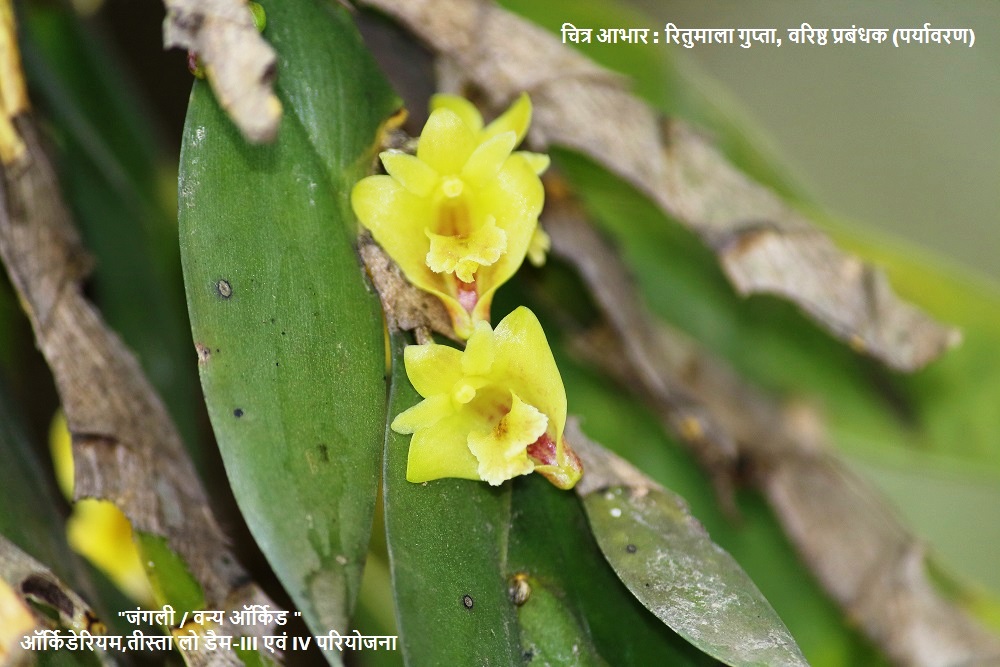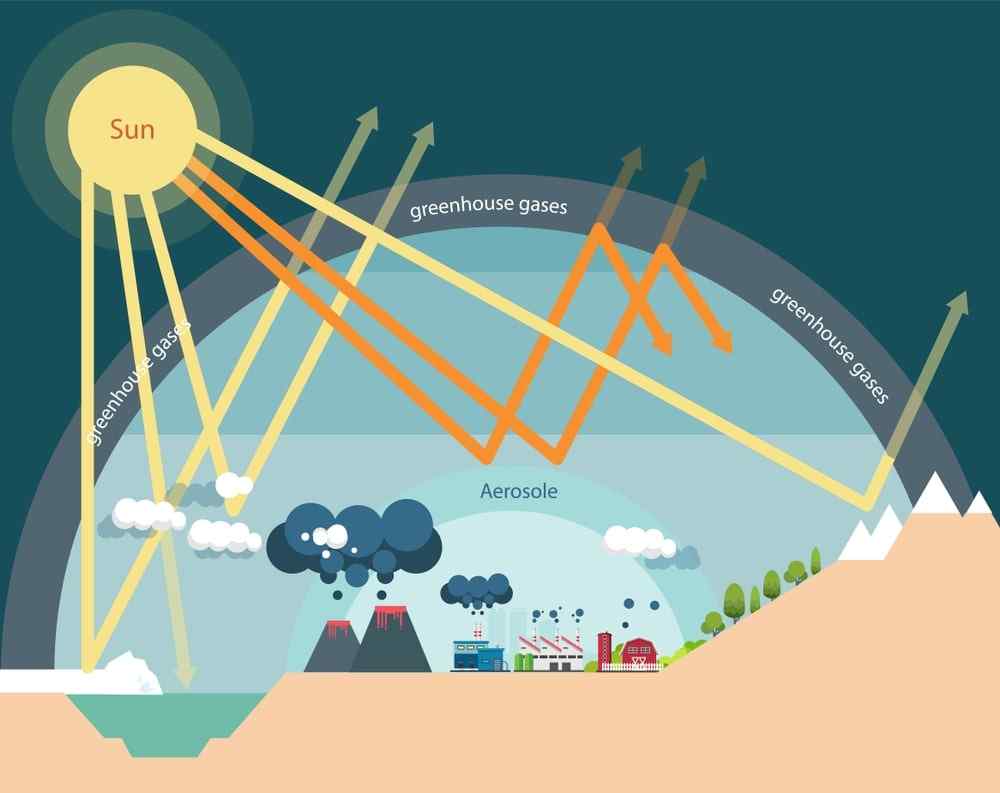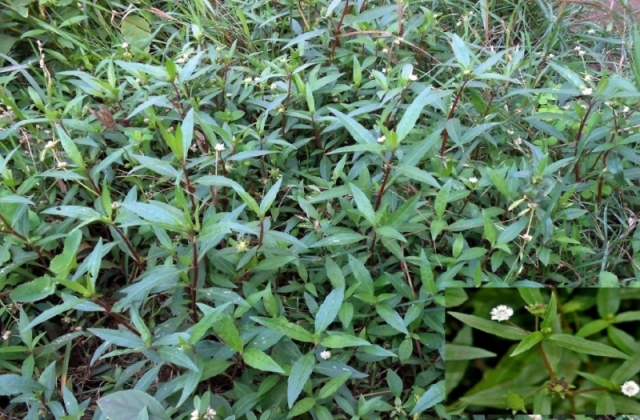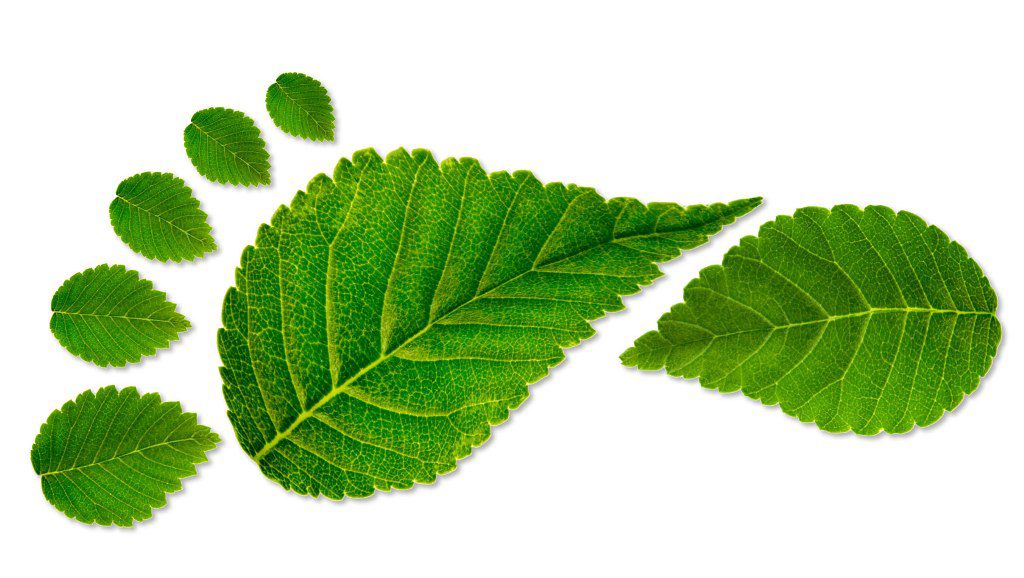NHPC Blog
इस अंक की तस्वीर
Orchid : Dendrobium anceps Sw.
उपरोक्त तस्वीर एनएचपीसी के तीस्ता लो डैम-III एवं IV परियोजनाओं के अंतरगर्त स्थापित ऑर्किडेरियम (Orchidarium) एवं वनस्पतिशाला (Arboretum) में पुन : स्थापित किए गए जंगली ऑर्किडस में से एक ऑर्किड नामत: Dendrobium anceps Sw. की है। यह ऑर्किडेरियम/वनस्पतिशाला वन्यजीव/जैव विविधता संरक्षण योजना के अंतर्गत ‘रियांग, दार्जलिंग जिला, पश्चिमी बंगाल’ में दार्जिलिंग वन विभाग एवं नॉर्थ बंगाल विश्व विद्यालय के माध्यम से विकसित किया गया है । ऑर्किड की यह प्रजाति 200 से 1400 मीटर की ऊंचाई पर असम, बांग्लादेश, पूर्वी हिमालय, नेपाल, भूटान, सिक्किम, अंडमान द्वीप समूह, म्यांमार, थाईलैंड, लाओस, कंबोडिया, निकोबार द्वीप समूह और वियतनाम में उष्णकटिबंधीय और उपोष्ण घाटियों में पाया जाता है। एक फूल आमतौर पर कुछ हफ़्ते तक रहता है। फूल में एक अलग खुशबू (एप्पल-पाई की तरह ) पाई जाती है । इसके फूल सुबह में सुगंधित होते हैं। Dendrobium anceps Sw. को उनके सुंदर पर्णसमूह के लिए भी जाना जाता है। इस खूबसूरत आर्किड के अस्तित्व के लिए, संरक्षण कार्य करना आवश्यक है।
रितुमाला गुप्ता, वरिष्ठ प्रबंधक (पर्यावरण)
पर्यावरण वार्ता (अंक 13 )
पर्यावरण ब्लॉग के नवीन अंक में हम सतत विकास की संकल्पना पर बात करते हैं। संज्ञान में लें कि पर्यावरण और विकास की बहस बहुत पुरानी है तथा दोनों को एक-साथ देखने की दृष्टि ही सतत विकास की अवधारणा है। पहले ही महात्मा गाँधी ने भांप कर कहा था कि “प्रकृति प्रत्येक मनुष्य की आवश्यकता पूरी कर सकती है, लेकिन एक भी मनुष्य के लालच को वह पूरा नहीं कर सकती”, इसे समझते हुए यदि गंभीरतापूर्वक देखें तो वैश्विक स्तर पर सतत विकास की अवधारणा का जन्म पर्यावरण की चिंताओं के दृष्टिग्त नहीं हुआ है। प्रकृति ने स्वयं अवरोध उत्पन्न किये कि विश्व को अपनी हवा, अपने पानी और अपनी मिट्टी की चिंता करने के लिये मजबूर होना पड़ा। इस बाध्यता का कारण भी बाजार के हित में ही अंतर्निहित था। व्यापारी हो चुके राष्ट्रों को अपने आर्थिक लाभ प्रभावित होने और उत्पादन प्रणालियों के बंद हो जाने का भय सताने लगा था। जिन राष्ट्रों की पूर्ण निर्भरता अपने औद्योगिक उत्पादनों पर थी वे अब ऐसी तकनीक चाहते थे जो विकास का पहिया भी न रुकने दे और उनके कारण पर्यावरण पर पड़ने वाले प्रभावों की कुछ रोकथाम भी सम्भव हो।
उत्पादों के द्वितीयक प्रभावों ने भी उत्पादक राष्ट्रों की चिंता बढा दी थी उदाहरण के लिये डीडीटी जैसे कीटनाशक अगर मच्छर की रोकथाम कर रहे थे तो उसके मानवजीवन पर पड़ने वाले नकारात्मक प्रभाव अब वैज्ञानिकों की चिंता का कारण बनने लगे थे। वर्ष 1962 में वैज्ञानिक रॉकल कारसन की किताब ‘दी साइलेंट स्प्रिंग’ ने डीडीटी के प्रभावों को सामने लाकर सतत विकास के दृष्टिकोण को नई दिशा प्रदान की। यह पुस्तक यह संदेश प्रदान करने में सफल रही कि एक उत्तम निष्कर्ष के लिये भी नकारात्मक प्रभावों की अनदेखी करना घातक हो सकता है। इसी कड़ी में वर्ष 1968 में प्रकाशित पॉल इहरलिच की पुस्तक ‘पॉप्युलेशन बम’ को भी गिना जाना चाहिये जिसके माध्यम से बढ़ती जनसंख्या द्वारा संसाधनों के दोहन पर प्रकाश डालते हुए पर्यावरण संरक्षण पर गहरी चिंता वयक्त की गयी थी। पर्यावरण की इन आरम्भिक चिंताओं पर ठोस प्रहार करते हुए वर्ष 1971 में आर्थिक सहयोग तथा विकास संगठन “पॉल्यूटर्स पे” सिद्धांत के साथ सामने आया जिसका मूल भाव था कि प्रदूषण फैलाने वाले देशों को पर्यावरण की सुरक्षा-संवर्धन का खर्च उठाना चाहिये। यह सिलसिला अपने परिणाम तक वर्ष 1972 में पहुँचा जब स्वीडन की राजधानी स्टॉकहोम में पर्यावरण पर केंद्रित संयुक्त राष्ट्र सम्मेलन आयोजित किया गया था। सारी दुनिया अब एकमत थी कि विकास के साथ-साथ पर्यावरण का भी समुचित रूप से संरक्षण होना चाहिये। संयुक्त राष्ट्र पर्यावरण कार्यक्रम की स्थापना के साथ पर्यावरण संरक्षण की अवधारणा में सतत विकास की दृष्टि समाहित हुई। इसके पश्चात से लम्बा समय सतत विकास के दृष्टिगत विश्व के विज्ञानिकों को कार्य करते हुए हो गया है। हमारा प्रयास ऐसा ही विकास होना चाहिये जिसमें प्रकृति को हुई हानि को न्यूनतम किया जा सके और उत्पादन का लाभ भी हो। एनएचपीसी अपनी सभी परियोजनाओं में सतत विकास के लक्ष्यों को निर्धारित करती है और इस दिशा में कार्य करने हेतु उद्यत है।
एन.एस. परमेश्वरन
कार्यपालक निदेशक
Image Source : https://www.petersons.com/blog/environmental-jobs-green-jobs-in-sustainable-development/
Frequently Asked Questions (FAQs) 5
Image Source = https://www.eagrovision.com/wp-content/uploads/2019/09/15632752926.jpg
GREENHOUSE GASES AND GLOBAL WARMING
Q. What are Greenhouse Gases?
Greenhouse gases are gases in Earth’s atmosphere that trap heat. They let sunlight pass through the atmosphere, but they prevent the heat that the sunlight brings from leaving the atmosphere. The main greenhouse gases are:
- Water vapor
- Carbon dioxide
- Methane
- Ozone
- Nitrous oxide
- Chlorofluorocarbons
Q. What is the Greenhouse Effect?
The greenhouse effect is a process that occurs when gases in Earth’s atmosphere trap the Sun’s heat. This process makes Earth much warmer than it would be without an atmosphere. The greenhouse effect is one of the things that makes Earth a comfortable place to live.
Q. How does the Greenhouse Effect work?
As you might expect from the name, the greenhouse effect works like a greenhouse. A greenhouse is a building with glass walls and a glass roof. Greenhouses are used to grow plants, such as tomatoes and tropical flowers. A greenhouse stays warm inside, even during the winter. In the daytime, sunlight shines into the greenhouse and warms the plants and air inside. At night time, it’s colder outside, but the greenhouse stays pretty warm inside. That’s because the glass walls of the greenhouse trap the Sun’s heat.
The greenhouse effect works much the same way on Earth. Greenhouse gases in the atmosphere, such as carbon dioxide, trap heat just like the glass roof of a greenhouse. During the day, the Sun shines through the atmosphere. Earth’s surface warms up in the sunlight. At night, Earth’s surface cools, releasing heat back into the air. But some of the heat is trapped by the greenhouse gases in the atmosphere. That’s what keeps our Earth warm.
Q. What contributes to Global Warming?
There are scientific evidences that human activities are causing global warming by generating more and more greenhouse gases. The main sources of global warming are:
- Burning of fossil fuels like coal and oils for electricity generation,
- Land-use changes (particularly deforestation),
- Agriculture and
- Transport.
Q. What are the effects of Global Warming?
Each year, scientists learn more about the consequences of global warming and many agree that environmental, economic and health consequences are occurring which will further intensify if current trends continue. Here’s just a smattering of what we look forward to:
- Melting glaciers, early snowmelt and severe droughts will cause more dramatic water shortages and increase the risk of wildfires.
- Rising sea levels will lead to coastal flooding.
- Forests, farms and cities will face troublesome new pests, heat waves, heavy downpours and increased flooding. All those factors will damage or destroy agriculture and fisheries.
- Disruption of habitats such as coral reefs and Alpine meadows could drive many plant and animal species to extinction.
- Allergies, asthma, and infectious disease outbreaks will become more common due to increased growth of pollen-producing ragweed, higher levels of air pollution, and the spread of conditions favorable to pathogens and mosquitoes.
What can we do to prevent Global Warming?
In order to prevent global temperatures from increasing more than 2 degrees above pre-industrial levels, current climate science suggests that atmospheric CO2 concentrations should not exceed 450ppm. This requires global emissions to decline to roughly 80% below 1990 levels by the year 2050. Such dramatic emissions reductions require a sharp move away from fossil fuel, significant improvements in energy efficiency and substantial reorganisation of our current economic system. This transition can only be achieved by far-reaching national and international climate policies.
[Contribution by: Brahmeshwar Kumar, Senior Manager (Environment)]
Refrences :
www.unfccc.int
www.ipcc.ch
www.carbonaction.co.uk
Bhringaraj – the little hairy daisies
image source : https://kalakkalsamayal.blogspot.com/2014/03/bhringaraj-thuvaiyal.html
Nomenclature
Scientific Name: Eclipta prostrata (Eclipta alba – old)
Hindi & Sanskrit: Bhringaraj
English: False daisy
Tamil: Karisalankanni
Ever noticed those little daisies among the weeds? A small herbaceous plant with flowers that look like tiny replicas of the white daisies and asters. With a white and green centre and hairy white little petals closely arranged. If yes, you are looking at the best ever medicine in Ayurved for growing good hair. Commonly called in English as false daisy, Bhringaraj or Eclipta prostrata is considered to be an all in one solution for hairfall, hair growth as well as for a good black colour and texture for hair. Wherever the moms know it, they make special oils for daughters by cooking coconut oil with a paste of bhringaraj leaves, for good hair growth. Bhringaraj is a commonly used ingredient in commercial ayurvedic hair oils as well. But the plant is such a common plant that anybody who has the slightest interest in plants would not miss those tiny little white flowers that grow among weeds in moist places. The plant flourishes at places which are always moist – near paddy fields, drains, and in kitchen backyards at portions which never dry up. Sometimes in well-watered lawns too, like in the little lawn behind Jyoti Sadan, NHPC. The plant belongs to the sunflower family Asteraceae and is a herbaceous perennial.
Medicinal value:
Bhringaraj is classically known for its strengthening and rejuvenating actions upon the scalp and within the hair follicles. Polypeptides present in bhringaraj have demonstrated hypotensive properties, but also strong anti-inflammatory activity throughout the body, including the skin. In the liver, bhringaraj has demonstrated the ability to regulate the production of hepatic enzymes. It is a strong hepato-protective, supporting the correct balance of liver enzymes, ensuring efficient and effective liver metabolism.
-Anitha Joy , Sr. Manager (Environment)
Reference – medicinal value
पर्यावरण शब्दकोश (7)
Image Source : http://www.kopin.org/food-for-thought/#post/0
| क्र. | शब्द | अर्थ |
| 1 | कच्छ
(Swamp/Marsh) |
यह भूमि का वह क्षेत्र है जो स्थायी रूप से संतृप्त या पानी से भरा होता है। यह मुख्यत: दो प्रकार का होता है- मीठे पानी का कच्छ/दलदल और खारे पानी का दलदल। मीठे पानी के दलदल आमतौर पर अंतर्देशीय, जबकि खारे पानी के दलदल तटीय क्षेत्रों में पाए जाते हैं। दलदल संक्रमण क्षेत्र हैं। ये न तो पूरी तरह से भूमि हैं और न ही पूरी तरह से पानी। इन्हें अक्सर उन प्रकार के पेड़ों से नामित किया जाता है जो उनमें उगते हैं- जैसे कि सरू के दलदल (cypress swamp) या कठोर लकड़ी के दलदल (hardwood swamp) ।
|
| 2 | क्लोरोफ्लोरोकार्बन
(Chlorofluorocarbon) |
क्लोरोफ्लोरोकार्बन (CFC) कार्बन, फ्लोरीन और क्लोरीन के परमाणुओं से युक्त गैर-विषाक्त व गैर-ज्वलनशील रसायन है। इसका उपयोग एरोसोल स्प्रे के निर्माण, फोम और पैकिंग सामग्री के एजेंटों में तथा रेफ्रिजरेंट और सॉल्वैंट्स के रूप में किया जाता है। क्लोरोफ्लोरोकार्बन में मौजूद क्लोरीन परमाणु वायुमंडलीय ओजोन के साथ प्रतिक्रिया कर ओजोन अणुओं के ऑक्सीजन में रूपांतरण का कारण बन, पृथ्वी की ओजोन परत को नुकसान पहुंचाते हैं । सीएफसी के उपयोग पर मॉन्ट्रियल प्रोटोकॉल द्वारा वैश्विक प्रतिबंध लगाया गया है।
|
| 3 | खाद
(Compost /manure) |
खाद का उपयोग पौधों के पोषक तत्वों के स्रोत के रूप में किया जाता है। यह मृत पौधों और जानवरों का विघटित रूप है जिनको उत्पादन बढ़ाने के लिए मिट्टी में मिलाया जाता है। खाद विघटन के बाद पोषक तत्व में रूपांतरित हो जाते हैं। मानव और पशु उत्सर्जन का उपयोग भी खाद के रूप में भी किया जाता है। ऐसा खाद नाइट्रोजन, फास्फोरस, और पोटेशियम से समृद्ध होताहै। यह उर्वरक का एक प्राकृतिक रूप है जिसके द्वारा मिट्टी की उर्वरता में सुधार होता है। इससे कोई प्रदूषण नहीं होता है एवं यह एक मूल्यवान, धारणीय और नवीकरणीय संसाधन है।
|
| 4 | खरपतवार
(Weed) |
कोई भी जंगली पौधा जो अवांछित जगह पर उगता है, विशेष रूप से किसी बगीचे या खेत में जहाँ यह खेती किए गए पौधों को स्वतंत्र रूप से बढ़ने से रोकता है, खरपतवार कहलाता है । एक खरपतवार कोई भी पौधा हो सकता है जिससे अर्थव्यवस्था, पर्यावरण, मानव स्वास्थ्य और आम जनता पर नकारात्मक प्रभाव पड़ताहै। खरपतवारों को आक्रामक पौधों के रूप में भी जाना जाता है।यह आमतौर पर बड़ी संख्या में बीजों का उत्पादन करते हैं, जिससे उनके प्रसार में सहायता मिलती है।खरपतवार विदेशी या देशी प्रजाति हो सकती है जो एक पारिस्थितिकी तंत्र में अपना उपनिवेश बना लेती जिसमें यह पहले मौजूद नहीं था।
|
| 5 | खरपतवार नाशक
(Weedicide / weed killer) |
खरपतवार नाशक वे रसायन होते हैं जो खरपतवार से छुटकारा पाने के लिए खेत में छिड़क दिए जाते हैं। इनका उपयोग विशेष फसलों में खरपतवारों के विकास को नियंत्रित करने के लिए किया जाता है। ये अवांछित पौधों को मारने के लिए बनाए गए हैं एवं इसके प्रभाव से बाकी की फसल को नुकसान नहीं पहुँचता । खरपतवार नाशक में उपस्थित विषाक्त पदार्थ मनुष्यों में कैंसर और अन्य स्वास्थ्य समस्याओं का कारण हो सकते हैं। इसके अलावा ये पदार्थ बारिश या किसी अन्य तरीके से भूजल तक पहुंच कर पानी के द्वारा मानव प्रणाली में प्रवेश करते हैं।
|
| 6 | खारा जल
(Saline/brackish water) |
खारा जल वह पानी है जो ताजे पानी की तुलना में नमकीन है, लेकिन समुद्री पानी जितना नमकीन नहीं है। अक्सर ये ताजा और समुद्री पानी के बीच संक्रमणकालीन क्षेत्र में पाया जाता है।यह ताजे पानी के साथ समुद्र के पानी के मिश्रण के परिणामस्वरूप हो सकता है जैसा कि नदियों के मुहाने का पानी। कुछ खास मानवीय गतिविधियां भी खारे पानी का उत्पादन कर सकती हैं, जैसे कुछ सिविल इंजीनियरिंग परियोजनाओं द्वारा तटीय दलदली भूमि में उत्पन्न बाढ़ । खारे पानी में अधिकांश स्थलीय पौधों की प्रजातियों को नुकसान पहुँचता है। उपयुक्त प्रबंधन के बिना यह पर्यावरण के लिए हानिकारक है। |
| 7 | खनिज
(Mineral) |
खनिज प्राकृतिक रूप से उपलब्ध अकार्बनिक ठोस है, जो एक निश्चित रासायनिक संरचना और परमाणु व्यवस्था का अनुसरण करता है । खनिज की कई हजार ज्ञात प्रजातियां हैं, जिनमें से लगभग 100 खनिज ऐसे हैं जो चट्टानों के प्रमुख घटक हैं और चट्टान बनाने वाले खनिज कहलाते हैं।
|
| 8 | गाद
(Silt) |
गाद ठोस धूल की तरह का तलछट है जो पानी, बर्फ या हवा के द्वारा परिवहन और जमा किया जाता है।यह चट्टान और खनिज के कणों से बनते हैं जिनका आकार मिट्टी के कणों से बड़ा लेकिन रेत कणों से छोता होता है। एकल गाद के कण इतने छोटे होते हैं कि उन्हें देखना मुश्किल होता है। गाद के रूप में वर्गीकृत होने के लिए एक कण को 0.5 सेंटीमीटर (.002 इंच) से कम होना चाहिए।यह मिट्टी और रेत के महीन टुकड़े हैं जो किसी नदी या झील के तल पर तलछट के रूप में पाए जाते हैं। यदि किसी नदी में बहुत अधिक गाद बहती है, तो वह गन्दा दिखता है।
|
| 9 | चिकित्सकीय अपशिष्ट
(Medical / Biomedical waste) |
चिकित्सा अपशिष्ट वैसे अपशिष्ट है जिसमें संक्रामक सामग्री (या ऐसी सामग्री जो संभवत: संक्रामक है) पाए जाते हैं। इसके अंतर्गत चिकित्सकों के कार्यालयों, अस्पतालों, दंत चिकित्सा पद्धतियों, प्रयोगशालाओं, चिकित्सा अनुसंधान सुविधाओं और पशु चिकित्सा क्लीनिक जैसी स्वास्थ्य सुविधाओं से उत्पन्न अपशिष्ट शामिल हैं।इस कचरे में शारीरिक तरल पदार्थ जैसे रक्त या अन्य संदूषक हो सकते हैं। इसे चिकित्सा अनुसंधान, परीक्षण, निदान, टीकाकरण या मानव या जानवरों के उपचार के दौरान उत्पन्न कचरे के रूप में भी परिभाषित किया गया है। कुछ उदाहरण हैं – पट्टियाँ, दस्ताने, सुइयां, ऊतक, परित्यक्त शल्य औजार आदि।
|
| 10 | चिपको आंदोलन
(Chipko movement) |
यह 1973 में एक अहिंसक आंदोलन था जिसका उद्देश्य पेड़ों की सुरक्षा और संरक्षण करना था। तत्कालीन उत्तर प्रदेश (अब उत्तराखंड ) के चमोली जिले में पेड़ों की कटाई के खिलाफ विद्रोह और पारिस्थितिक संतुलन बनाए रखने हेतु इस आन्दोलन की शुरुवात हुई और कुछ ही समय में यह आन्दोलन उत्तर भारत के अन्य राज्यों में भी फैल गया। आंदोलन का नाम ‘चिपको’ इसलिए पड़ा क्योंकि लोगों ने पेड़ों को गले लगाया और काटने से बचाने के लिए उन्हें घेरा। |
पूजा सुन्डी, उप प्रबंधक (पर्यावरण)
(स्रोत : इन्टरनेट/गूगल)
An eco-friendly wedding
The colourful flowers and petals, vibrant themes, swinging chandeliers and happily ever after chants that fill the air with love and laughter brings the onset of wedding season in India. Amidst sonorous and booming musical tones coming from life sized speakers the concept of an eco-friendly wedding becomes just a meagre whisper. A tonne of waste is produced through decorative items, food, disposable plates, cups, used tissues, etc. Colossal amount of plastic waste, food waste, food leftover is generated during such ceremonies. As we know plastic takes hundreds of years to decompose, generating more of it has lead to man-made mountains of waste and at some places reaching the height of Qutub Minar in Delhi. Inappropriate knowledge on how to organize various associated events in an environment friendly manner ultimately leads to causing harm to the environment and indirectly to us. Unfortunately, the fact regarding indirect harm to the mankind is understood by very few. Various steps can be taken at wedding functions to avoid sending waste to the already piling landfills.
A few measures that can be easily adopted in wedding scenes are as under:
Going back to steel :
This avoids the use of disposables and hence reduces waste. On an average one person generates a minimum of 5 pieces of disposables at a wedding. Nowadays, Indian weddings are extravagant and a costly affair. It is interesting to note that in India before 1990’s weddings used to be very environment friendly keeping minimal use of everything which produced less waste. With seasonal flowers for decorations, food served on banana leaves or reusable earthen pots, steel plates, glasses etc. and the simplicity of pandal beautification using materials that were bio-degradable never went out of fashion. The used banana leaves were then fed to cows who would digest the fibrous material (that would otherwise take months to decompose) and produce manure the other day. The practice of using plastic and other disastrous items in weddings, get together etc. came only after 1990’s and since then we have been loading Mother Earth with tonnes of garbage in the process of such celebrations. As a result, the burden has far exceeded its carrying capacity. In such a scenario, the need and drive to Go Back to Steel becomes imperative. Let’s go back to from where we started.
Presently, multitude of options can be seen when it comes to renting steel utensils for various events including weddings in the form of plate/crockery banks. Besides one can hire them for free provided he/she uses ask-use-wash-return policy. A certain security amount has to be deposited which is given back after returning the borrowed items. The leftover food can be sent to various NGOs operating in the vicinity so that waste can be minimized and famished section of the society can be fed.
Decoration using waste materials – it’s possible !
A lot of waste materials like coconut shells, banana leaves, painted gulmohar pods, origami papers and waste plastic bottles can be employed to give an artistic and imaginative look to the wedding theme. Seasonal/ commonly available flowers and even lush green leaves will surely paint a beautiful picture. One’s creative acumen can be put to best use in such scenario.
Never mix dry waste with wet waste- Segregation at source is the solution :
It is crucial to segregate waste at its source of generation. The plastic waste, if any, may be sent for recycling and food waste composted or sent to bio-gas plants. Separate places should be designated to collect items like glass, spoons, plates, napkins etc. so as to ensure their proper management and cleaning. A simple practice can be wonderfully helpful in managing food waste in an excellent way. It is unfortunate to learn that in India segregation has not been made mandatory. Majority people still mix biodegradable with non-biodegradable waste. Instead stricter laws should be enforced and non-compliance should be penalised.
Making wedding invites interesting and memorable :
Printing less number of invites can be profitable as it offers reduction in cost and paper because at the end the beautifully adorned cards are sent either to raddiwala or thrown away in bins and forgotten. They can only be reserved for old and close family members. Printing on seed paper or adopting the practice of offering planted pots as wedding invites can prove to be much better alternatives. The cost difference is less and can be ignored. Moreover, the efforts towards going the green way will be appreciated and followed by people. Boasting of arranging an eco-friendly wedding definitely comes with popularity as an added advantage. It is all about being conscious and setting the trend.
Using cotton napkins instead of paper tissues is a great idea but beware- it might tempt the guests to steal them !
Paper tissues that will unnecessarily create solid waste can be well replaced by cotton napkins. The printed or personally designed napkins can be reused after giving a wash. Well, the stealing part shouldn’t be worrisome as it will establish the fact that those printed napkins were pretty handsome and well appreciated. The wedding board too can be made of wood, jute, cloth and other decorative items. Such initiatives can be employed and will curb the usual practice of sending trash and unsegregated waste to already swelling landfills.
Innovative ideas :
The family can request guests not to wrap gifts in plastic. Small display boards can be installed in dining rooms to make people aware of the eco-friendly measures taken during the event. Even the guests at the event can discuss ways to organize such commemorations in an eco-friendly manner with the host. Usually people are ignorant about such practices but once they are guided they do take the initiative and measures beforehand in future.
As denizens of the Earth, we must take every opportunity to help maintain its beauty by taking eco-friendly initiatives in whichever phase of life possible and spreading the word. As an example to state- inculcating small habits like bringing our own tea/coffee cups in office will be a small but impactful step in curbing use of single use plastic.
– Shreya , Dy. Manager (Environment)
Source / References :
https://www.thebetterindia.com/86743/green-wedding-shyamala-suresh-eco-friendly/
https://www.theknot.com/content/eco-friendly-wedding-guide
Youtube videos-
-
https://www.thebetterindia.com/86743/green-wedding-shyamala-suresh-eco-friendly/
-
https://youtu.be/AzqG1U9ekNc





